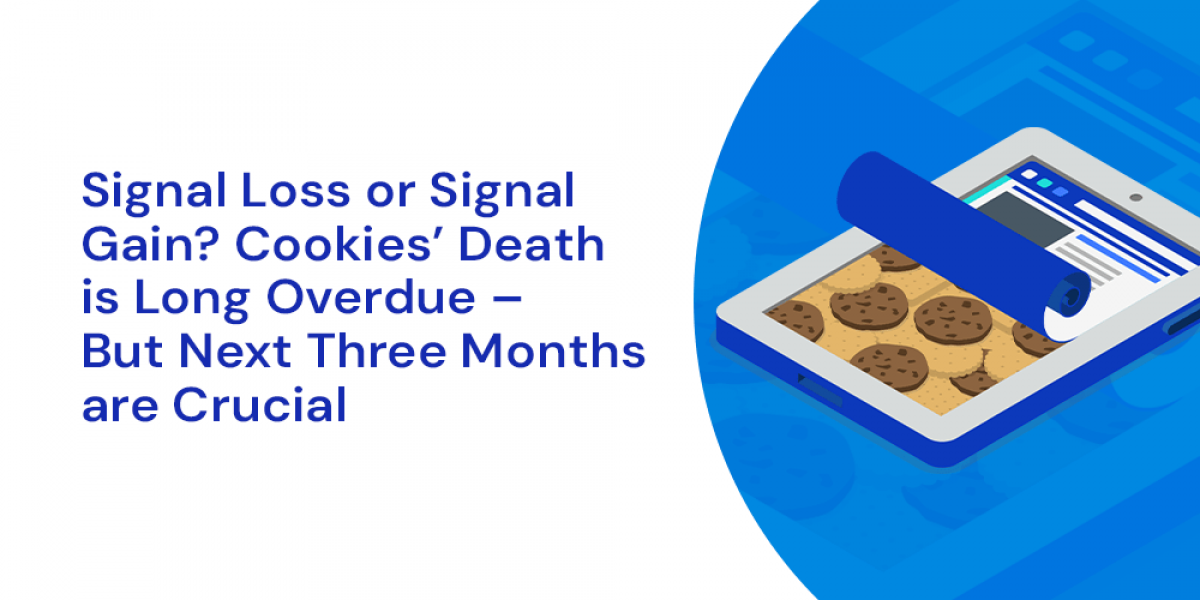The death of cookies is long overdue. Replacement tech means advertisers can stop relying on arguably unfit for purpose technology and start working out how to target the entire internet, instead of 60%. The rest of the world uses browsers that booted out tracking cookies by default years ago – or ad blockers.
This logically presents an opportunity for 40 percent gains if Google gets the green light from the UK’s competition regulator to finally flick the off switch in a few months’ time. (The regulator has the power to veto Google’s cookie cull if it is not happy with key aspects of its proposals – and is actively telling industry it will use those powers.)
Either way, cookies were never meant to be advertising’s underpinning signal carriers for targeting, tracking, and measurement – they were just in the right (or wrong) place at the right time. Twenty or so years later, here we are.
Now, much of the adtech world, not least the DSPs, are facing major rebuilds to make technology handle auctions that will take place inside the browser – as specified in Google’s Privacy Sandbox approach.
Meanwhile, publishers face a nervous wait to see just how the new tools – primarily Protected Audiences API, Topics API, and Attribution Reporting API – impact CPMs. Adtech firms have started testing those tools in earnest over the last few weeks.
Match making

Ahead of D-Day, Google is attempting to calm some nerves by talking up better results from other cookieless solutions.
In a joint case study with LiveRamp for hotel chain Omni Hotels & Resorts, a data matching play between the advertiser and publishers via Google’s PAIR (Publisher Advertiser Identity Reconciliation) delivered 4x more conversions that cookie-based CRM targeting via DV 360. (It defined these conversions as people seeing the ad, then hitting the hotel chain’s website.)
It didn’t say how many publishers were involved in the campaign, but presumable higher conversion rates equal higher CPMs. Hopefully enough for publishers to start recouping the cost of the CDP and all the effort of getting people to log-in.
Some of Google’s rivals would argue that’s what they have been saying all along – email-based identifiers matched between publishers and advertisers via a clean room actually work, given sufficient scale. However, Google believes hashed approaches can be re-identified and therefore risk leaking data that can be re-used elsewhere, whereas PAIR requires triple encryption from each party (see this explainer) making that pretty hard to re-engineer.
Either way, the case study makes positive reading for brands and publishers that have been amassing first party data and getting in into a usable, actionable state.
Now the trick is to get enough publishers together in one place to make match rates meaningful to brands – and make those identifiers work together.
Scale to prevail?

Across the open web, scaling post-cookie IDs present a major challenge. According to the latest data, UID2.0 was integrated by 45,587 publishers as of February 18, behind ID5, which was deployed by 79,149 publishers, reports Business Insider. Even if both of those companies have put together tens of millions of tokenized profiles, they will need much, much more.
In the meantime, dozens of other alt-ID players are also trying to present a viable signal solution – a level of fragmentation that adds no small amount of complexity.
Criteo thinks it might have a fix in that department. In it latest earnings call, the adtech firm is “using AI to make the right decision on what identity solution to choose” in real time, Chief Product Officer, Todd Parsons, told analysts. “It’s very promising, and we’re very excited about it.” On the downside, the firm is baking-in “expected signal loss impact of approximately $30 million to $40 million in the second half of the year” as a result of cookie deprecation, according to CFO Sarah Glickman. So the AI alt-identity picker appears to have it work cut out.
Criteo may yet be able to claw back some of that cookie deprecation revenue hit. Parsons in March told Digiday the firm is planning to effectively provide ‘sandbox-as-a-service’ capability for longer-tail DSPs and SSPs that might not have the resource or capability ($7 million per player is one mooted figure, alongside 10 engineers) to rewire their set-ups to handle the loss of cookies.
But before licensing tech to smaller rivals, its own post-cookie approach and tech must be proven viable. Which means the next few months, heading into the June Sandbox testing end-date mandated by the UK’s Competition and Markets Authority, could prove highly instructive. Not only for the smaller DSPs and SSPs hoping to piggyback the likes of Criteo – but just about everyone in digital advertising.


